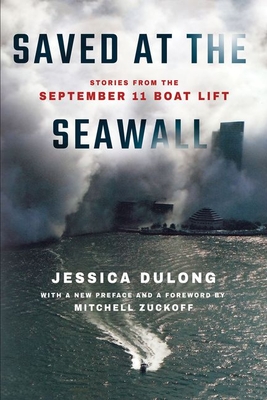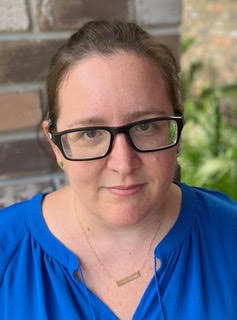Reviewed by Emily Webber
Saved at the Seawall: Stories from the September 11 Boat Lift (Three Hills, May 2021) is a minute-by-minute recap of the events of 9/11 and the immediate aftermath, focusing on the maritime response and boat evacuations. This year marks the 20th anniversary of the 9/11 attacks, when terrorists hijacked passenger airplanes and crashed them into the Twin Towers at the World Trade Center in New York City. As recent events in Afghanistan show, the global ramifications of the 9/11 attacks are painful and complex. DuLong’s book reminds us that we can hold the United States accountable for failures while remembering the victims and honoring those who participated in rescue efforts. In the new edition of this book, DuLong also addresses the current COVD-19 pandemic, calling out what we can learn from the 9/11 responders.
(Three Hills, May 2021) is a minute-by-minute recap of the events of 9/11 and the immediate aftermath, focusing on the maritime response and boat evacuations. This year marks the 20th anniversary of the 9/11 attacks, when terrorists hijacked passenger airplanes and crashed them into the Twin Towers at the World Trade Center in New York City. As recent events in Afghanistan show, the global ramifications of the 9/11 attacks are painful and complex. DuLong’s book reminds us that we can hold the United States accountable for failures while remembering the victims and honoring those who participated in rescue efforts. In the new edition of this book, DuLong also addresses the current COVD-19 pandemic, calling out what we can learn from the 9/11 responders.
DuLong’s carefully researched book chronicles the response from the water and the evacuation efforts as “boat crews evacuated an estimated 400,000 to 500,000 civilians in less than nine hours,” making it the largest water evacuation in history. DuLong focuses on eyewitness accounts with an unfiltered writing style that captures the quick decision-making required while in the middle of sensory overload, chaos, and devastation. The backbone of the book is the maritime community response, focusing on the work of ferries, tugs, yachts, and dinner cruises, in addition to government agencies and first responders. But Saved at the Seawall also captures the stories of those fleeing the buildings and lower Manhattan. We follow a financial worker who jumps into the Hudson River to escape the debris of the collapsing towers and a nanny and the child in her care as they evacuate by boat.
DuLong is writing about a community she knows. As the chief engineer emerita of the retired 1931 New York City fireboat, John J. Harvey, she’s especially able to convey the code of conduct at the core of the maritime community, showing how they responded with selflessness, innovation, and collaboration. Through these eyewitness accounts, we also see the unique ways in which this community offered aid, from evacuating people to fireboats that provided the only source of water to fight the fires. Days later, the maritime community continued to help with clearing debris and providing food. One such example was The Spirit of New York dinner cruise boat, which provided 600 meals an hour to feed rescuers in the days after.
In the last section of the book, DuLong briefly revisits some of the people in the years after 9/11. For those still alive, the emotional trauma remains sharp. Many others became sick or died from breathing in the dust and debris. The reader is not spared the horror of what those in New York witnessed—the falling bodies, the injured, the frantic attempts to flee, the feelings of absolute helplessness, and the long-term emotional and physical impacts. But in every story, the resiliency and courage of these people are present.
My strongest memory of the 9/11 attacks is paging through the collected “Portraits of Grief” compiled by The New York Times. It is a heartbreaking more than 550 pages of obituaries, yet it is not even a complete list of the dead. But Saved at the Seawall reminded me to shift my focus from grief to hope. I turned toward the other image burned into my memory of that time, the photograph of first responders carrying the body of Mychal Judge from the rubble of the towers. Judge, a Catholic priest, and chaplain of a New York City fire department, was a constant, committed support to those in need, including addicts, the homeless, or the victims of the AIDS crisis. He was also first on the scene at 9/11 with the firefighters he served. He chose to turn in the direction of the destruction to help regardless of the cost to himself. The same is true for every single voice that DuLong brings us in this book and in these voices we see a light in the darkness.
As DuLong mentions in the preface, it’s hard not to think of the current pandemic when reading this book. Another one of the stories recounted in Saved at the Seawall is that of Gulmar Praga, a Marine engineer aboard the John D. McKean FDNY fireboat. As he saw the tower collapse, he admitted his first thought was, “I’m glad I’m not under it,” even as he knew his friends were dying. But seconds later, he rushed to deliver aid. In the current pandemic or other crisis, even if we aren’t impacted, our next thought should be how we can help those suffering. Saying this can sometimes feel like an unattainable ideal but Saved at the Seawall: Stories from the September 11 Boat Lift proves that ordinary people can offer respect, assistance, and kindness to help others through even the worst crisis.
In my home state of Florida, there are already over 40,000 people dead from COVID. It is another event we are living through that will leave our lives forever altered. Though the circumstances differ, we can learn from 9/11 survivors and the community response. The stories in Saved at the Seawall and the legacy of those who died call us to remember that we all belong to each other, and there’s value in listening to people’s stories.
 Emily Webber’s writing has appeared in The Writer magazine, the Ploughshares Blog, Five Points, Maudlin House, Brevity, and Slip Lip Magazine. She’s the author of a chapbook of flash fiction, Macerated, from Paper Nautilus Press. Find more at emilyannwebber.com and on Twitter @emilyannwebber.
Emily Webber’s writing has appeared in The Writer magazine, the Ploughshares Blog, Five Points, Maudlin House, Brevity, and Slip Lip Magazine. She’s the author of a chapbook of flash fiction, Macerated, from Paper Nautilus Press. Find more at emilyannwebber.com and on Twitter @emilyannwebber.



1 comment for “REVIEW: Saved at the Seawall: Stories from the September 11 Boat Lift by Jessica DuLong”